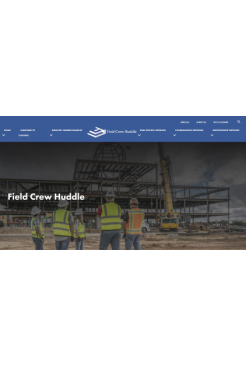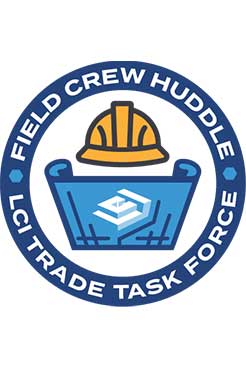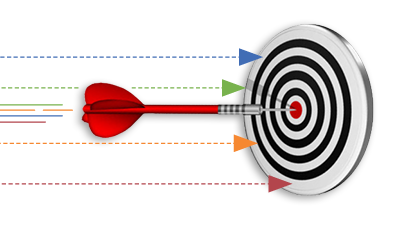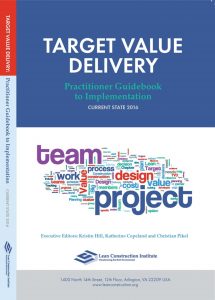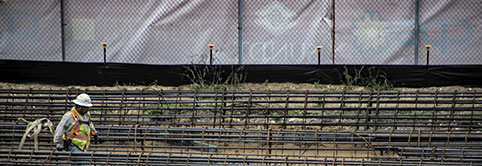5 Whys
Introduction to Root Cause Analysis & 5 Whys
In design and construction, problems are somewhat like viruses. Workers know that problems are bound to happen but can’t necessarily predict when, where, or to what extent they’ll occur. Small problems are nothing to be scared of, much like a head cold. But even small issues in the process deserve to be investigated with your team.
When problems do arise, workers may feel the urge to dismiss the symptoms and assume that they’ll fix themselves in time. This can lead to a snowball effect in which the problem, unchecked, becomes more aggressive and more damaging to the project’s outcome.
By the time the team is ready to deal with the problem, they may be forced to waste resources they could have saved if they had attacked the problem right away. The goal of Lean thinking is to increase collaborative problem solving and improve communication channels, providing teams with the means to recognize and address problems immediately so they do not transform into more destructive issues later.
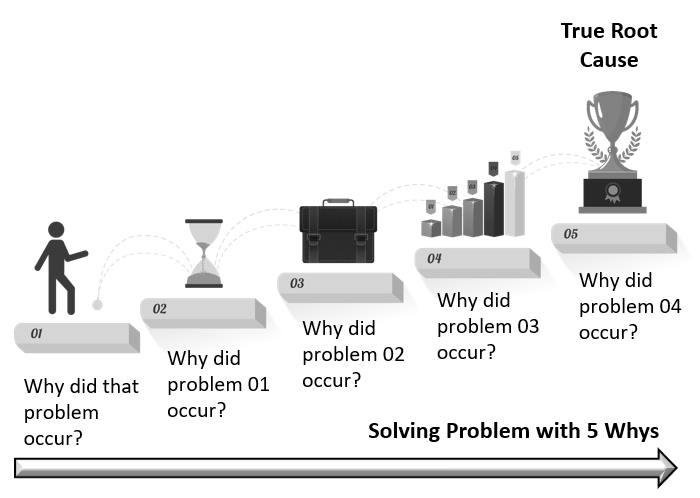
Root Cause Analysis Definition
A systematic method of analyzing possible causes to determine the root cause of a problem.
Root Cause Analysis
Root Cause Analysis (RCA) is a tool that helps teams discover not only what went wrong, but also provides members with the framework to develop a countermeasure to prevent future occurrences of the issue – similar to how the immune system learns to recognize viruses it has seen before to prevent them from causing harm in the future.
Applying Root Cause Analysis
The first step to effectively applying Root Cause Analysis is to learn how to identify problems. The ability to see problems in a process is required for Kaizen thinking to take place and for continuous improvement to drive processes forward.
The moment a problem is identified, teams should gather all of their collective knowledge together to extinguish the issue as quickly as possible before it snowballs into something worse.
5 Why Analysis
Developed by Japanese professor Kaoru Ishikawa, 5 Why Analysis is a simple but effective RCA method and can be used for both small and moderately sized problems. Complex issues may require 5 Why Analysis to be conducted in conjunction with other Lean problem solving methods such as A3 Thinking and PDCA (Plan, Do, Check, Adjust).
When conducting 5 Why Analysis or any other type of Root Cause Analysis, it’s important to operate with the process in mind rather than the people. Finger pointing is counterproductive and does not align with a culture of Respect for People.
Lean methods encourage workers to continuously improve upon the process so that the outcome delivers maximum value to the stakeholder. If a problem has arisen on the job site, it’s a sign that a closer analysis of the process is necessary.

What is 5 Why Analysis?
A root cause analysis tool used to dig for the root cause of a condition by asking why successively (at least five times) whenever a problem exists in order to get beyond the apparent symptoms. As each answer to the why question is documented, an additional inquiry is made concerning that response.
5 Whys Example
Let’s examine a practical root cause analysis example of a problem that workers may encounter on the construction site and how 5 Why Analysis can be used to tackle the source of the issue.
- Problem Statement: 3rd floor electrical work did not finish on time. (Why?)
- First Why: We were missing two workers from the crew. (Why?)
- Second Why: The electrical PM sent them to a repair. (Why?)
- Third Why: The PM did not know eight men were needed. (Why?)
- Fourth Why: The PM was not involved in the planning. (Why?)
- Fifth Why: Only the foreman was invited. (Root Cause)
This example is a good illustration of why it’s important to continue digging for the root cause when performing a Root Cause Analysis.
If the team had stopped asking “why” at an earlier stage of the process, the team may have made the assumption that the two workers were missing from the crew because they were neglecting their jobs. There likely would have been finger pointing at specific members of the team for failing to complete the work in time. In reality, the root cause was a problem with the process rather than with the people.
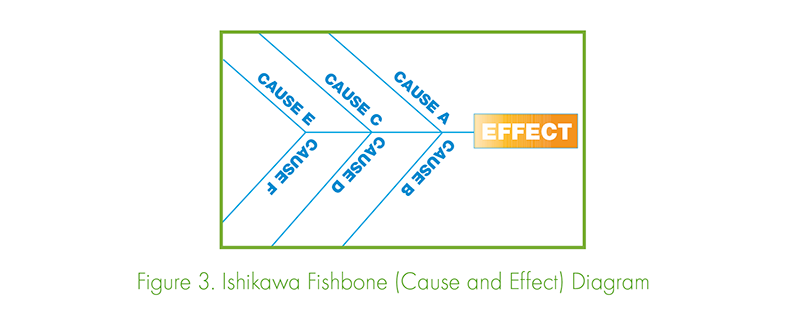
Fishbone Diagram
A fishbone diagram for root cause analysis allows teams to investigate and consider several possible root causes to a singular problem. Used in conjunction with 5 Whys and PDCA thinking, this Root Cause Analysis template helps to provide a fuller picture of what went wrong and how to address it.
Benefits & Drawbacks
5 Why Analysis Benefits
- 5 Why Analysis forces teams to advance past the symptoms that they may otherwise stop at as “root causes” and dive deeper into the causes of those symptoms.
- The process allows teams to identify the relationship between various factors that can lead to a chain reaction.
- 5 Why Analysis helps teams prevent future similar problems from occurring. This follows the Lean mindset of continuous improvement.
- The process is easy to learn and implement. You don’t need any sort of analytical background to utilize it.
5 Why Analysis Drawbacks
- The process isn’t easily repeatable. A person analyzing the problem through a different lens may come to a different conclusion. Sometimes there are more than one possible causes to complex problems, which is why 5 Why Analysis is often used in combination with other Lean methods for bigger problems.
- You can only operate within the information you know; you can’t find the actual root cause if you are lacking important information.
- Generally, a single root cause is identified at the end of the process when, in reality, some problems result from a number of errors (also common in bigger problems).
Learn Root Cause Analysis & 5 Why
The Lean Construction Institute is committed to transforming the design and construction industry by providing Lean educational resources, conducting research, and facilitating local and national Lean events. Explore supplementary resources to further your understanding of root cause analysis and 5 why analysis below.
Lean Assessments
How strong is your Lean knowledge? Take a Lean assessment to determine your current state so you have a baseline for improvement. Lean assessments are available for individuals, teams, and organizations alike. Whether you’re new to Lean or are an experienced Lean practitioner, Lean assessments are a great way to get started at LCI!
TAKE ASSESSMENTMore Lean Topics
From 5s to IPD, explore popular Lean design and construction topics below.

